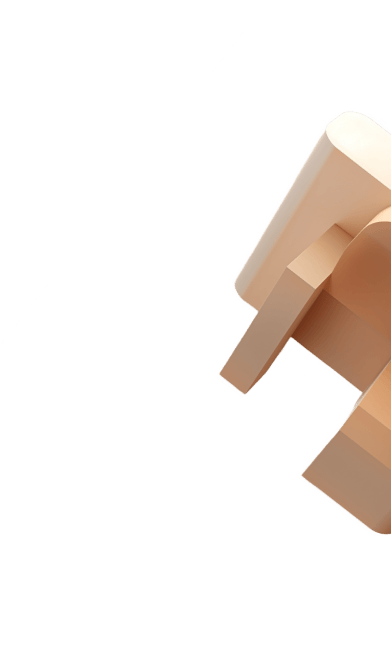Buy-to-let mortgages
Whether you’re a first-time landlord or looking to add another property to your portfolio, find the right buy-to-let mortgage with expert guidance from the Better.co.uk mortgage advisers.
Becoming a landlord isn’t a decision to be taken lightly; there are many things to consider, such as cost and tax implications. Compare buy-to-let mortgages to find the right one for you.
How do buy-to-let mortgages work?
Buy-to-let (BTL) mortgages are designed to fund the purchase of a property you intend to rent to tenants. The majority of buy-to-let mortgages are interest-only.
With interest-only buy-to-let mortgages, your monthly repayments will only cover the interest you’re charged on the money you’ve borrowed, known as the capital.
Only needing to pay the interest can help to keep your monthly payments down, maximising the income you make from rent you’ll receive from your tenants. It’s important to remember that you’ll need to repay the capital when your mortgage term ends.
You can apply for repayment buy-to-let mortgages, where your monthly payments pay off a portion of the capital and interest, but these tend to be a less popular option.
When you apply, lenders determine your affordability based on the property's potential rental income. However, they may also look at any existing income you have.
Certain lenders may require that the rental income generated from the property surpasses your monthly mortgage payments by at least 25%, while others might set the requirement as high as 50%. This is one of the reasons why many landlords choose interest-only buy-to-let mortgages.
Identifying the right buy-to-let mortgage for you
The right buy-to-let mortgage will depend on your circumstances, the rental property you’re looking to buy and the property's potential rental income.
It’s important to be aware that the majority of buy-to-let mortgages are not regulated by the Financial Conduct Authority (FCA) because they are classified as commercial borrowing products.
However, if you or a family member reside in the property or occupy over 40% of it, the mortgage will be categorised as a "consumer buy-to-let mortgage." These mortgages adhere to stricter lending criteria and resemble residential mortgages in nature.
The different types of buy-to-let mortgages include:
Who can apply for a buy-to-let mortgage?
Investing in a rental property can be a good investment, but you’ll need to meet specific eligibility requirements when applying for a buy-to-let mortgage. While these criteria may differ among lenders, most lenders typically inquire about the following:
Your age - To qualify for a buy-to-let mortgage, the majority of lenders will expect you to be a minimum of 21 years old, although some may require you to be 25 or older. Many lenders set an upper age limit for the end of the mortgage term - typically, borrowers cannot exceed the age of 70 to 75 when the term concludes.
Your existing properties - Some lenders will require you to own your home outright or with an existing mortgage. There may also be a limit on how many properties you can own.
Your credit history - For most lenders, you’ll need a good credit score to qualify for a BTL mortgage. This helps to demonstrate that you’re a reliable borrower and have used credit responsibly in the past. If you don’t have a good credit history, it may be beneficial to make steps to improve your credit score before applying.
Your available deposit - Buy-to-let mortgages typically require a higher deposit than residential mortgages. Most lenders will require a minimum buy-to-let mortgage deposit of 25% of the property's value.
Your income & potential rental income - Typically, you’ll need a minimum gross annual income of £25,000, although this varies depending on the lender and how much you want to borrow. The potential rental income will often need to cover at least 125% of your mortgage payment.
Pros and cons of buy-to-let mortgages
Property has always been viewed as a great investment, but like with all financial products, buy-to-let mortgages have advantages and disadvantages.
Here are some pros and cons to consider:
Pros
Rental income
Owning rental properties can boost your income as long as the rent you’re earning is higher than any associated costs.
Property prices appreciate
House prices tend to increase over time and have historically risen quickly. This means that in the future, the value of your rental property could be higher than when you bought it.
Protection against inflation
If you keep your money in savings or other investments, inflation can erode the purchasing power of your money. Property values and rental incomes tend to move in line with inflation.
High demand for rental properties
Millions of people in the UK are private tenants. Demand for rental properties is high, meaning that as long as you’re charging the right rent and your property is well-maintained and in a good location, you shouldn’t struggle to find a tenant.
Cons
Higher interest rates
Buy-to-let mortgage rates are typically higher than residential mortgages.
Income & Capital gains tax
Any rental income you make is subject to income tax, and if the price of your buy-to-let property has increased when you sell it, you may need to pay capital gains tax.
Other cost implications
On top of any tax liabilities, buying and owning a rental property can come with many fees, like stamp duty surcharge, legal costs, insurance costs and the cost of maintaining the property. You’ll need to make sure your rental income can comfortably cover these costs, as well as your mortgage payments.
No capital repayment
If you opt for an interest-only buy-to-let mortgage, you won’t be repaying the capital, meaning that even at the end of your mortgage term, you’ll still owe the amount you originally borrowed.
Loss of rent
Loss of rental income can occur when your property remains vacant for a period of time or when tenants fail to pay their rent. You must have a contingency plan in place to ensure you can still afford your mortgage payments even if you experience a complete absence of rental income.
Negative equity
If your property decreases in value, you could end up in negative equity, especially if you haven’t repaid any of the capital. Negative equity is when you owe more than the property is worth, meaning that even if you were to sell the property, it wouldn’t cover the amount you need to pay off your mortgage.
Our expert says...
Investing in a rental property is a big decision; whilst it can be profitable in the long run, purchasing buy-to-let properties can come with several initial and ongoing costs. You’ll need to crunch the numbers and be sure that your rental income will not only cover your mortgage payments but any other costs associated with being a landlord.
If you’re ready to get started or want guidance on the right buy-to-let mortgage option for you, speak to one of our expert mortgage brokers today.
Jonathan Bone - Lead Mortgage Adviser
Buy-to-let mortgage FAQs
The cost of a buy-to-let mortgage will depend on various factors, like:
Your loan-to-value - The more you borrow, the more you’ll pay in interest, because interest is charged as a percentage of the loan amount.
Your interest rate - Your buy-to-let interest rate will determine how much interest you’re charged monthly. If you have a fixed interest rate, you’ll be charged the same amount each month, but your interest can change if you’re on a variable-rate mortgage.
Stamp Duty - If you already own one or more properties and you choose to purchase a rental property, you’ll face a stamp duty surcharge of an additional 3%.
Additional fees- Mortgages often come with initial fees, such as solicitor fees, arrangement fees and valuation fees.
The mortgage costs aren’t the only things you’ll need to account for if you become a landlord. Here are some other expenses to factor into your budget:
Buildings/landlord insurance
Income tax on rental fees
Letting agent fees (if you choose to use one)
Maintenance costs
Most lenders will offer a maximum loan-to-value of 75%, meaning you’ll need to have a minimum of 25% of the property’s value for your deposit.
So if you wanted to buy a £400,000 house with a buy-to-let mortgage, you’d need to have at least £100,000 saved for the deposit.
While it’s possible to find lenders who accept smaller deposits for buy-to-let mortgages, it’s not a common practice. This is because buy-to-let lending is generally perceived as riskier compared to residential mortgages. Lenders require larger deposits to mitigate the potential risks involved.
If you own the property without a mortgage, then yes, you can let your property. Most residential mortgages will have terms that specify you can’t let your home. If you wish to rent out a room or the whole property, you’ll need to get permission from your mortgage company. This is called ‘consent to let’.
Failing to get permission from your lender before renting out your property could be considered mortgage fraud and could land you in trouble with your lender. Your mortgage company could demand that you repay everything you’ve borrowed in full immediately, or face having the property repossessed.
If you have a buy-to-let mortgage, you are likely to find that the terms of your mortgage won’t allow you to live in the property. If your lender finds that you’re living in the property when you shouldn’t be, they could demand the mortgage repaid immediately.
There are not many lenders who offer buy to let mortgages to first time buyers. Some will not lend to you at all.
Those that do are likely to consider your gross salary when you apply for a mortgage.
The minimum is often around £25,000 and the lender will have certain rules.
As you do not already own a home, you do not have to pay the 3% stamp duty surcharge for investors and second homebuyers.
As you will not be living in the property you cannot get a first time buyer stamp duty discount.
In short, yes, first-time buyers can get a buy-to-let mortgage before a residential mortgage, but it can be complex, and there may only be a few lenders willing to offer you a mortgage. Those that do may ask for a larger than average deposit or charge higher interest rates.
Investing in a rental property in a more affordable area compared to your current location can be a wise and cost-effective way to get on the property ladder. However, it's important to note that if you choose to purchase a rental property, you won’t be eligible for stamp duty relief or other first-time buyer incentives when you eventually seek a residential mortgage for your own home.
Owning rental property can come with tax implications, and you’ll need to consider these when deciding whether or not it’s worth the investment.
Income Tax - If you earn profits exceeding £1,000 from rental income you will be liable to pay income tax. However, you can reduce your taxable profits by deducting allowable expenses before calculating what you owe. If your rental profits surpass £2,500 per year, you must register for self-assessment with HMRC.
Capital Gains Tax - When you come to sell a buy-to-let property, you may have to pay capital gains tax if the property has increased in value.
Stamp Duty Land Tax - You’ll not only need to pay the normal amount of stamp duty for the property value, but if you already own a property, you’ll need to pay an additional 3% of the property's value in stamp duty.
Yes, it’s possible to secure a buy-to-let mortgage through a limited company. This option can be advantageous if you’re a higher-rate taxpayer or aiming to be a full-time landlord, because there may be tax benefits associated with managing your property portfolio through a limited company.
Setting up and operating a limited company can be intricate and costly. While there might be tax advantages, it may not always result in a cheaper solution.
How much you’re able to borrow will depend on several factors, such as:
Your deposit & LTV - For rental properties, you’ll typically need at least a 75% loan-to-value (LTV), meaning you’ll need 25% of the property’s value as a deposit. The more money you have available for a deposit, the more you can borrow, as long as you meet all other affordability conditions.
The potential rental income of the property is the main aspect lenders will look at when considering how much you can borrow with a buy-to-let mortgage. Most lenders require the property to have a potential rental income of at least 125% of the monthly mortgage payment.
Some lenders will also consider your other income and outgoings when determining how much you can borrow and most buy-to-let lenders will want you to have another source of income.
Theoretically, there’s no limit to the number of buy-to-let properties or mortgages you can have. However, lenders may have their own limits.
Some providers will limit how many buy-to-let mortgages or the total amount they will lend you. This doesn’t mean you can’t use more than one lender, but some may restrict how many BTL mortgages you can have with other lenders to be eligible for their products.
Apply for a buy-to-let mortgage
Secure the most suitable buy-to-let mortgage rate for you
Get support throughout your landlord mortgage journey
Identify the right level of landlord protection you need
Landlord insurance
Learn why you need landlord insurance
Discover the different types of landlord insurance
identify landlord insurance costs
Learning centre
Essential mortgage 101 learnings
Learn why you need mortgage protection
Landlord advice
What people are saying about Better.co.uk...
Get a mortgage with Better.co.uk today
Better.co.uk is a fee-free mortgage broker
4.8-star Trustpilot rating from over 9,000 reviews
Compare mortgage deals from over 100 lenders
Get matched with the right legal team with SmartBuyer
Fund a big expense with a Homeowner Loan

Important info & marketing claims
You may have to pay an early repayment charge to your existing lender if you remortgage. Your savings will depend on personal circumstances.
Your home may be repossessed if you do not keep up repayments on your mortgage.
*89% of customers will be better off using Better.co.uk rather than going direct with their lender. Read more on our marketing claims page.
We can't always guarantee we will be able to help you with your mortgage application depending on your credit history and circumstances.
Average mortgage decision and approval times are based on Better.co.uk's historic data for lenders we submit applications to.
Tracker rates are identified after comparing over 12,000 mortgage products from over 100 mortgage lenders.
As of January 2023, Better.co.uk has access to over 100 lenders. This number is subject to change.
For buy-to-let landlords, there's no guarantee that it will be possible to arrange continuous letting of a property, nor that rental income will be sufficient to meet the cost of the mortgage.

